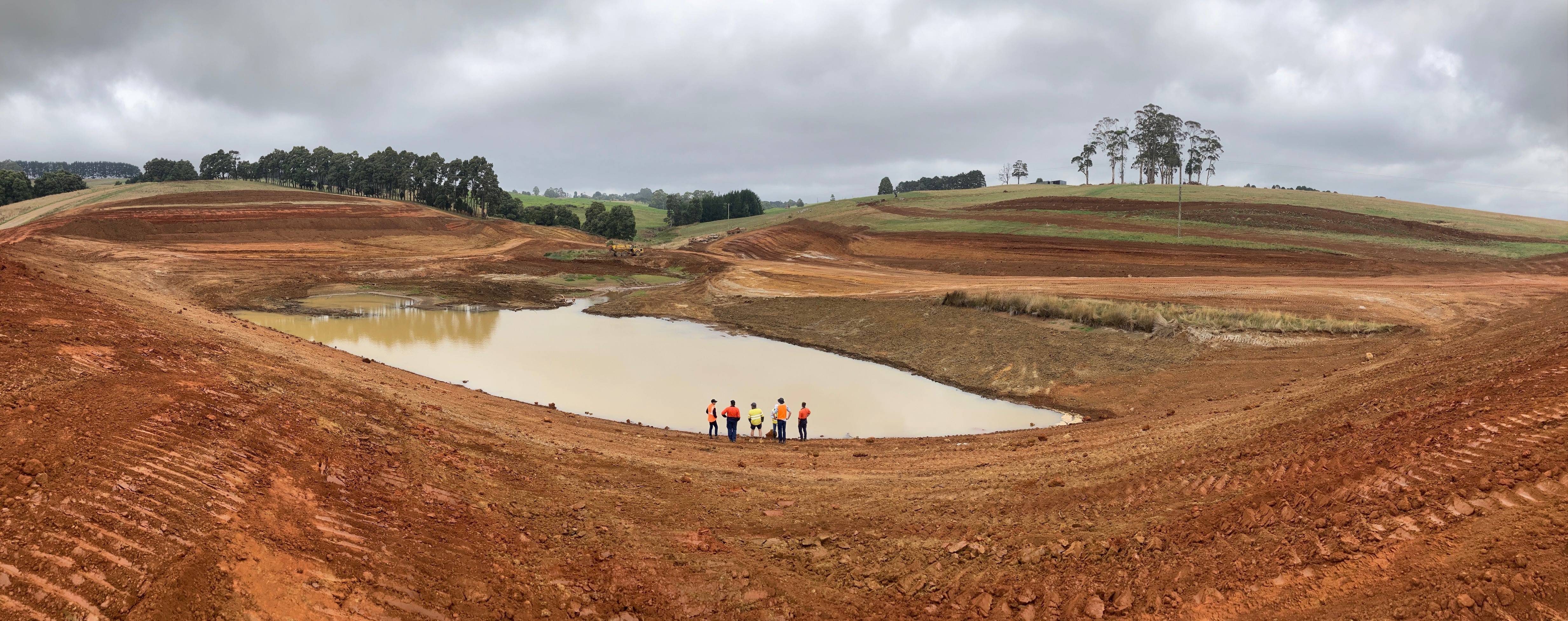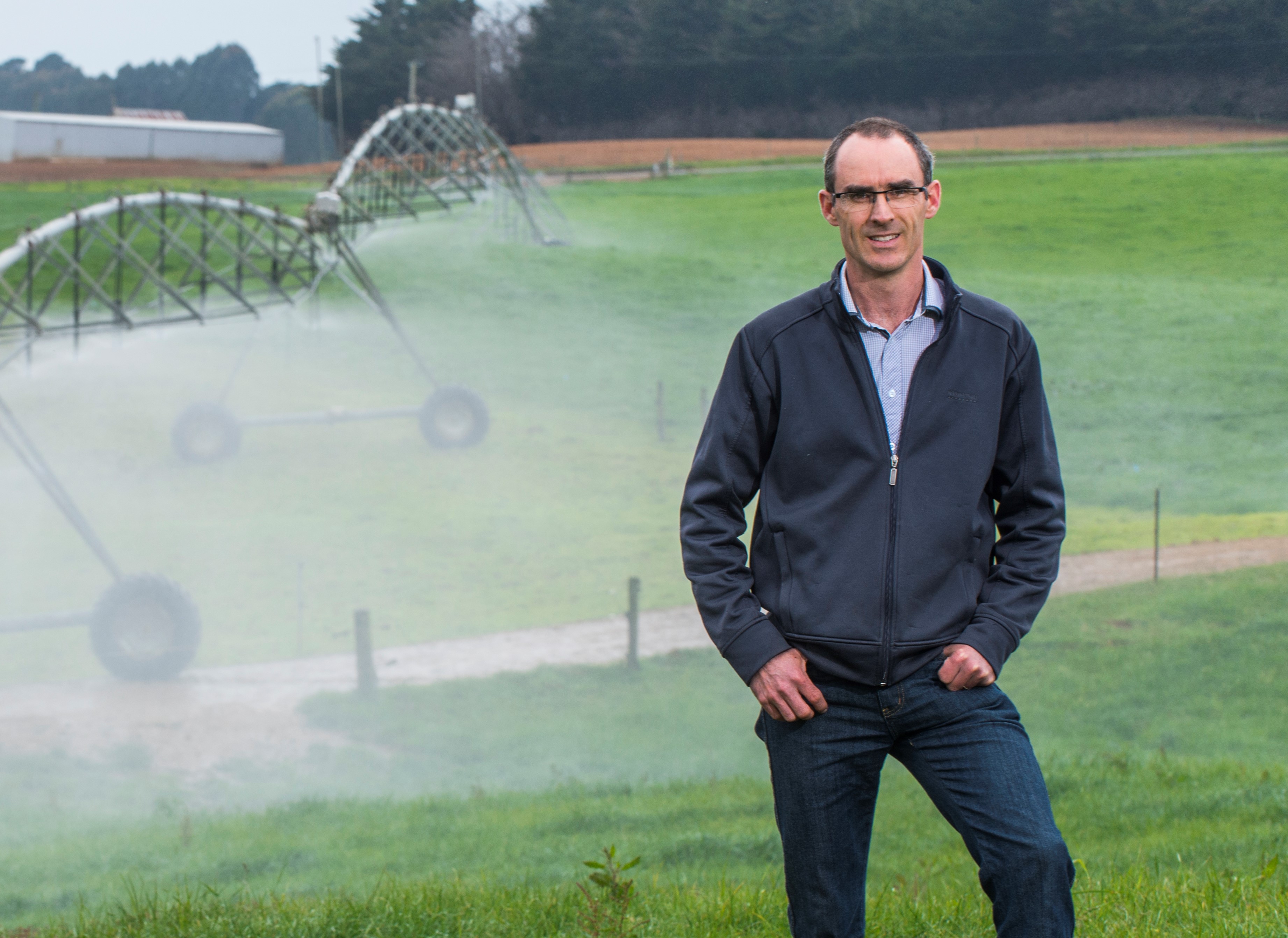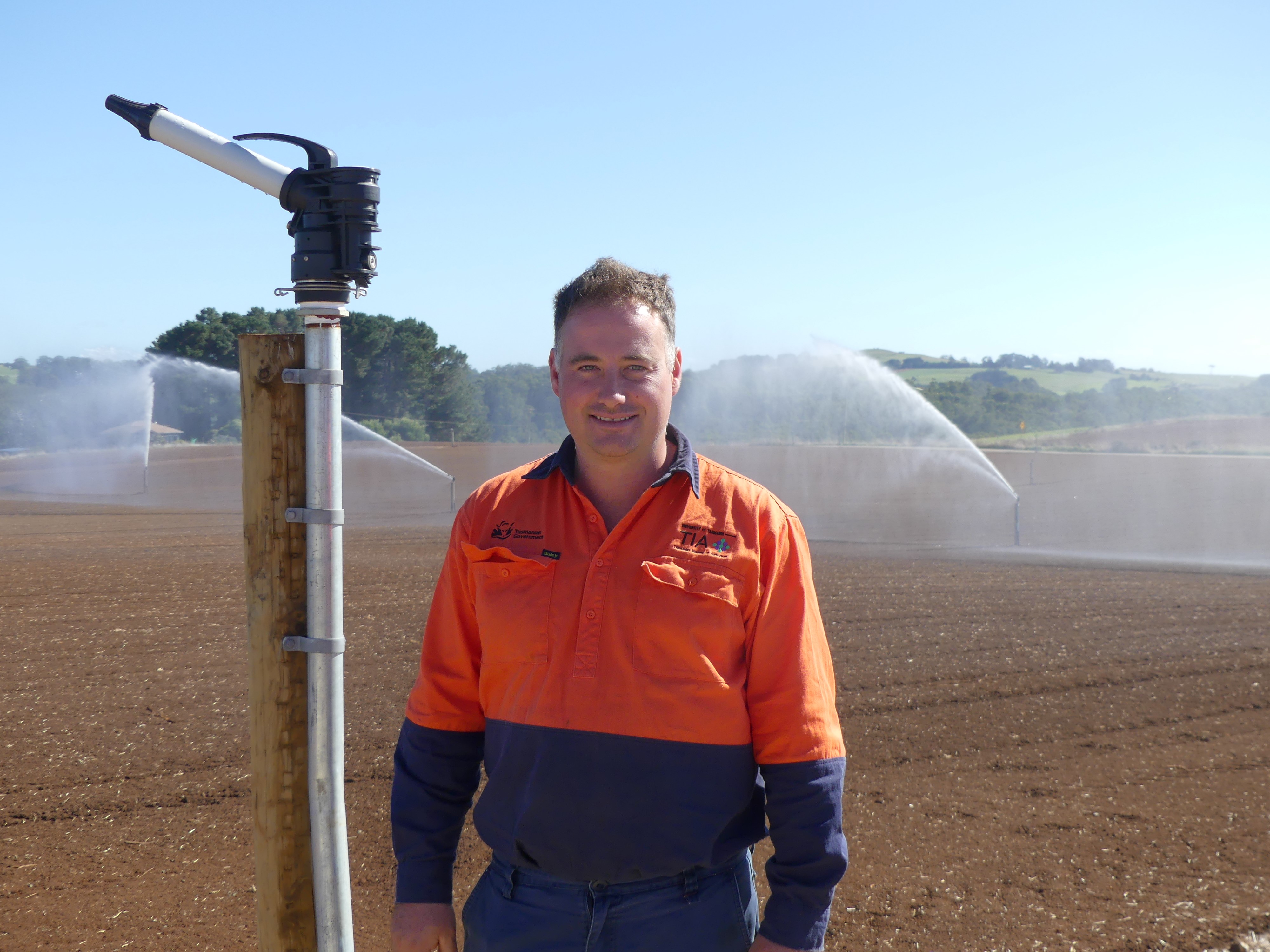Situated on lush green pastures with picturesque views overlooking Table Cape, the Research Facility (TDRF) is arguably one of the best ‘offices’ in the world. It’s about to become even better with a multi-million-dollar upgrade that will equip the facility to undertake whole-farm systems research using farmlets – an approach to dairy research that is currently not happening anywhere else in Australia.
The new research aims to find practical ways that farmers can halve the amount of synthetic nitrogen fertiliser used on dairy farms without negatively impacting productivity. A recent dramatic increase in the cost of nitrogen fertilisers has become a key challenge for the profitability of dairy farms and the ability to reduce nitrogen usage will result in significant cost-savings for farmers, as well as important environmental benefits.
The upgrades are the result of a $7.8 million joint-investment from the Tasmanian Government and the University of Tasmania to support future success of TIA’s research farms in the North-West, also including the Forthside Vegetable Research Facility. This investment will underpin a Region of Excellence for applied agriculture research and demonstration to industry.
The scale of the upgrades taking place at TDRF is significant and includes a new 50-bay rotary dairy, a new 12.5 megalitre effluent dam, increased irrigation water storage capacity in one of the dams from 24 to 115 megalitres, 11 kilometres of underground irrigation pipeline, and the conversion of 32 hectares of previously unirrigated land for farmlet trials.
Enabling new research & investment

Work has been fast-tracked to ensure the farm is operational by mid-2022 to enable a five-year research program that has been co-funded by Dairy Australia.
The $6.5 million Dairy HIGH 2 (high integrity grass-fed herds) project will focus on pasture-based dairy systems and seeks to address industry challenges and opportunities to achieve highly productive and profitable dairy operations that are sustainable into the future. It is a five-year partnership of strategic importance to Australia’s dairy industry.
“We’ve set an ambitious goal to halve the amount of nitrogen fertiliser used on dairy farms without affecting the amount of pasture or milk solids produced on irrigated pasture. If we can achieve this there is a potential cost saving for the industry of more than $220 per hectare. With the cost of nitrogen continuing to increase the advantage could be even greater than this,” TIA Livestock Production Centre Leader, Dr James Hills said.
“We want to achieve 20 tonnes of dry matter grown from irrigated pasture and 2000 kg milk solids per hectare per year with only 150 units of synthetic nitrogen fertiliser. This is a significant reduction from the 350 kg/hectare of synthetic nitrogen fertiliser that is commonly used for contemporary perennial ryegrass monocultures.
“The cost of nitrogen is continuing to increase and is a key challenge for the profitability of dairy farm businesses. We know that the industry wants practical solutions to enable them to use nitrogen fertiliser more efficiently, enhance sustainability outcomes and reduce input costs.”
“With this new project, Dairy Australia’s partnership with TIA will continue delivering dairy research and extension services that will investigate and promote dairy farming practices that allow dairy farms and their communities to thrive in the current changing environment,” said Dairy Australia’s Technical Lead in Feedbase and Nutrition, Rodrigo Albornoz.
“TIA’s new dairy facilities and unique research farmlet design will provide dairy farmers in Tasmania and other pasture-based regions in Australia with access to leading and valuable research that supports improvement of production efficiency and reduces risks associated with high reliance on synthetic nitrogen fertiliser for the production of home grown feedbase. These are critical research areas that will support sustainable and long-term growth of pasture-based farming systems.”
Practical outcomes from research

Farmlets or ‘mini farms’ are being established with 1 ha paddocks situated over 32 ha. This will enable the team to test research hypotheses under real farm conditions and ensure the results provide practical solutions for farmers.
The overall upgrade has been designed with the farmlet research methodology front-and-centre.
“We now have a much larger area for our milking platform which is great for our research and ensuring that the farm is a commercially viable operation,” Dr Hills said.
There are four farmlets consisting of eight irrigated paddocks of equal size that will be evaluated over three grazing seasons. For the Dairy Australia-funded trials, each farmlet will include a herd of 30 cows that are balanced for breed, parity, and live weight. Researchers will examine the plant-animal-environment interactions between different pasture compositions and varying rates of nitrogen use.
The treatments for the trial were determined by a steering committee of industry professionals, and include:
- Farmlet 1: 80% perennial ryegrass and 20% white clover – with 300kg of nitrogen per hectare
- Farmlet 2: 80% perennial ryegrass and 20% white clover - with 150kg of nitrogen per hectare
- Farmlet 3: 40% perennial ryegrass, 30% white clover, 30% plantain - with 150kg of nitrogen per hectare
- Farmlet 4: 40% mixed grasses, 30% mixed legumes, 30% mixed herbs - with no nitrogen application
The latest irrigation technology

The farmlets are equipped with fixed sprinkler irrigation infrastructure along the fence lines to ensure that each paddock receives identical water input.
“This significant investment uses Perrot p2-S piston driven guns, a Goldtec control system and has approximately 11 km of infrastructure located underground.
“It’s not a common system on Tasmanian dairy farms, but we’ve chosen this option because of the requirement to ensure water is applied with precision across all of the 32 rectangular farmlet paddocks and this system achieves that,” Dr Hills said.
“Water infrastructure is crucial for this project. We’ve increased the capacity of an existing dam by more than 90 megalitres to ensure adequate water storage for irrigation of the farmlets.”
Another crucial piece of infrastructure is the new 12.5 megalitre effluent dam and adjoining solids trap which enables us to sustainably manage wash down water from the holding yards and dairy.
TIA will retain a variable rate pivot irrigation system at TDRF and this will continue to be used for other research trials.
Dairy of the future
A key enabling piece of infrastructure is a new 50-unit rotary milking parlour, that has been tailor-made for farmlet experiments.
“The modernised milking parlour will provide better facilities for supplement feeding research and automated collection of research-quality cow feeding, production, health and welfare data,” Dr Hills said.
It has been especially designed with an underpass to enable researchers access to the centre of the rotary to conduct herd testing without interfering with the operations.
The new parlour will also have milk meters for every stall, walk over scales, a body condition scoring camera and an individualised feeding system.
Outcomes for Tasmania’s dairy industry
The research conducted at TDRF will lead to tangible productivity and sustainability improvements for Tasmanian dairy farmers, supporting the Tasmanian Government’s target to grow the annual farm gate value of agriculture to $10 billion per year by 2050.
“The dairy industry is Tasmania’s highest value agriculture sector, with a farmgate value of $506 million and a processed value of $870 million in 2019-20. We will continue to work closely with the dairy industry to achieve sustainable growth into the future,” Dr Hills said.
“The long-term vision is for TDRF to be somewhere that researchers, students, farmers, and the community can come together to solve real-world problems facing the dairy industry and agriculture more broadly.”
TIA in the North
This investment in TIA’s research farm capacity in North-West Tasmania is an example of our commitment to the region.
From 2024, TIA’s headquarters will be located at the University of Tasmania’s Newnham campus within the new Tasmanian Agricultural Precinct. With the inclusion of the Department of Natural Resources and Environment Tasmania, the Precinct will combine agricultural science, water management, industry development and biosecurity functions located in a single precinct.
While the focus of our activity will be in the North, TIA remains a state-wide institution and we will continue to have a presence across Tasmania. This includes a strong presence of research and industry engagement staff in the North-West, working to support the livestock and production horticulture industries which are vitally important to the region.
TIA is a joint venture between the University of Tasmania and the Tasmanian Government.
This article was published in Tasmanian Country newspaper on 20 May 2022.


